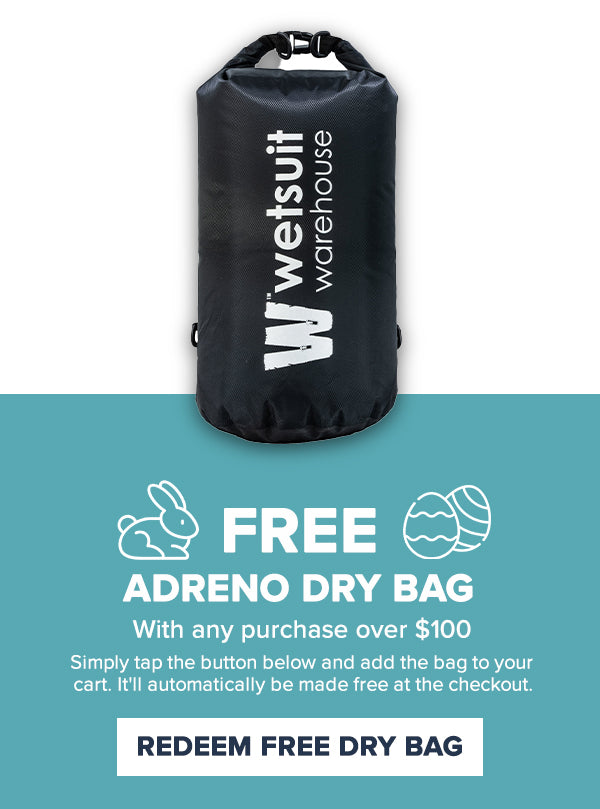Water Skiing Suits FAQ
1. What sort of wetsuit is best for water skiing?
Water skiers need a good fitting wetsuit that can offer plenty of freedom of movement in the upper body section. Water skiing wetsuits are typically constructed with a slightly thicker torso for warmth and then thinner material on the arms for more flexibility. The shape is also cut slightly looser around the shoulders which allows for extra movement of the upper torso. Diving wetsuits are not as suitable for water skiing as they are generally quite close fitting in the upper torso section to help heat retention when fully submerged. This means that these suits will not be as flexible as a wetsuit designed for water skiing. Ideally you need to choose a water skiing, surfing or wake boarding wetsuit that is designed for energetic sports with lots of upper body movement.
2. What wetsuit thickness do I need for water skiing?
Modern wetsuit thickness is measured in millimetres. The thickness of the synthetic neoprene rubber material used to make wetsuits will impact on two key areas, warmth and flexibility. The more you increase the thickness of the rubber then the less flexibility is available. The thickness of wetsuit you will need will depend on what water temperatures you are water skiing in. Water skiers need wetsuits that have plenty of flexibility so you should choose the thinnest suit you can for the water conditions. Ideally a 3/2mm wetsuit is the best option for water skiing. If you are in water conditions colder than 25 degrees centigrade then you may need a thicker suit such as a 5/3mm option.
3. Why do water skiing wetsuits let water in?
The fundamental purpose of wetsuits is to keep you warm in the water. There is a very simple way they do this, which is to let a small amount of water enter the suit. This is then pressed in a thin layer between the suit and your skin. Your body warms this water up and then the heat is retained, keeping your body temperature regular whilst you are enjoying your water skiing experience.
4 What type of neoprene is best for water skiing?
There are a few different types of neoprene used for wetsuits. This directly affects flexibility and cost. The cheapest neoprene is the standard version and this is what the basic wetsuits are made from. These wetsuits are affordable by they do not offer enough flexibility in most cases for water skiing. Super Stretch Neoprene can be manufactured in different mixes such as 60% or 100% options. This is a much more flexible type of wetsuit ideal for active sports such as water skiing. The 100% option is the most expensive but offers the best fit and freedom of movement.
5. Is seam construction important for water skiing wetsuits?
Seam construction is an important factor when it comes to warmth. Water skiers can spend a lot of time in the water and out in the open air where wind chill can be a factor. This means that if you are water skiing in cooler conditions you need a wetsuit that is going to keep you as warm as possible. Sealed seams help to keep warm water inside the suit and prevent cold water from seeping in. If you are water skiing in temperatures above 25 degrees centigrade then standard Flatlock seam stitching is fine (this looks a little like train tracks). If you are in cold waters below this then sealed Blindstitched seams are recommended as they are reinforced for extra protection to prevent cold water from penetrating the wetsuit (this is like Flatlock but narrower in width).
6. How can I make my summer weight wetsuit warmer for winter?
You may not have enough money to buy a wetsuit for all seasons. One way you can make your wetsuit more versatile is to purchase a Poly Fleece Lining. This fleecy material is very comfortable and is effective at enhancing heat retention for lighter weight wetsuits.
7. Is water repellent neoprene useful for water skiing wetsuits?
100% super stretch water repellent neoprene is a good choice for water skiers as this material works to repel water from your suit. This causes water to bead and run off your suit and helps to keep you drier and warmer. This is an expensive option but is ideal for water skiers, surfers and wake boarders who spend a lot of time in and out of the water.
8. What zipper type is best for water skiing wetsuits?
Standard diving wetsuits have full length zippers and although this makes it much easier to get in and out of the suit it does reduce flexibility. Water skiers need as much flexibility as possible so short-zipper or no-zip wetsuits are much better options. No-zip wetsuits offer the greatest freedom of movement although you will not be able to wear the wetsuit folded down to your waist after a session.
9. What is flush resistance?
If you have flush resistant features on your wetsuit then this means that the neck, arms and legs have tapered cuffs that bond to your skin. This prevents cold water from entering your suit and flushing out the warm water. Flush resistant wetsuits are used in cold water conditions to increase wetsuit heat retention.
10. Can I use my water skiing wetsuit for surfing?
Water skiing wetsuits are designed for active sports that take place mainly above the water. They offer plenty of flexibility and freedom of movement in the upper body. This means they can also be suitable for other similar types of sports such as surfing and wake boarding.


